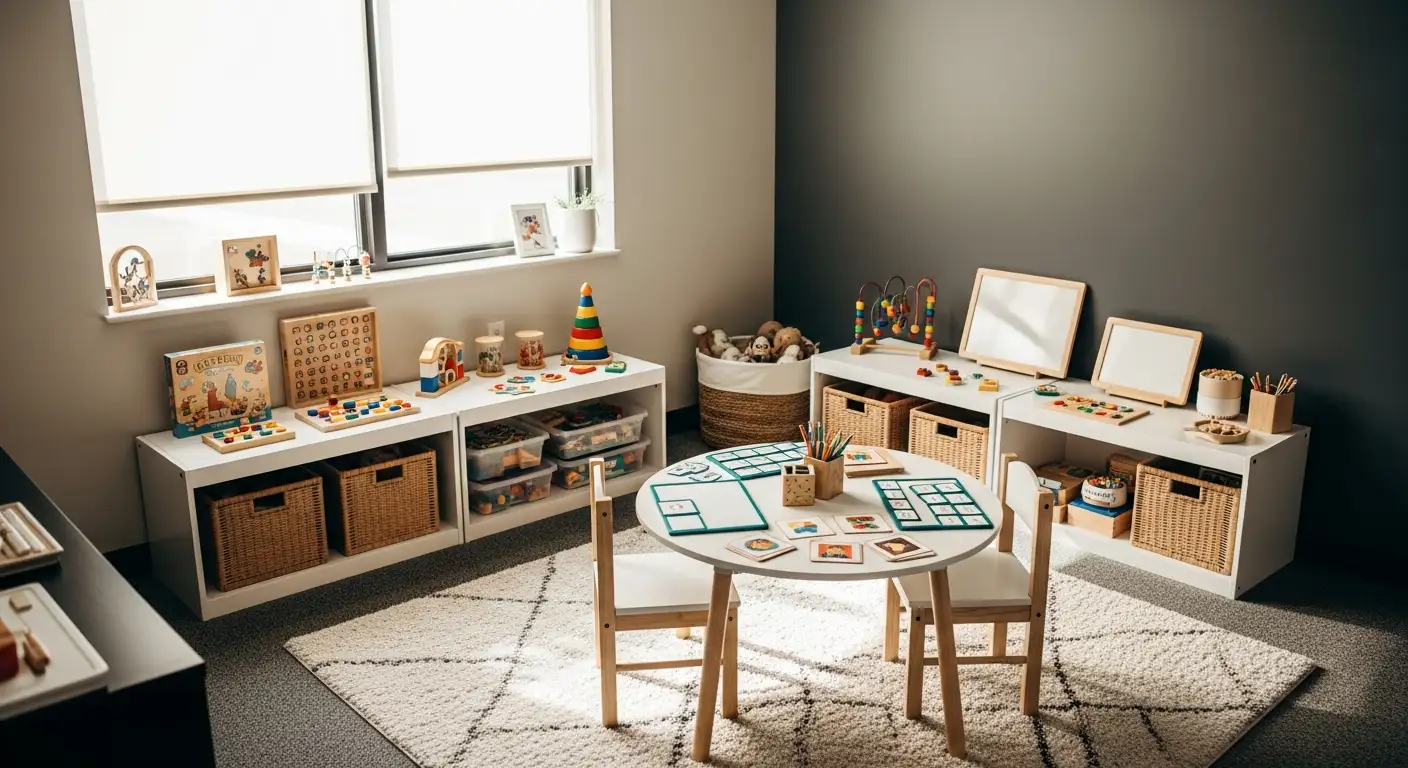How ABA Therapy Can Help with Transitioning Between Activities


Understanding the Challenge of Transitions for Children with Autism
Transitions between activities can be a significant source of stress and behavioral challenges for children on the autism spectrum. The shift from one task to another introduces uncertainty, disrupts established routines, and often leads to resistance or anxiety. ABA therapy offers a structured framework and effective strategies designed to ease these transitions, fostering independence and emotional regulation.
Why Transitions Are Difficult for Children with Autism

Why do children with autism find transitions challenging?
Children with autism often find transitions challenging because they tend to develop strong attachments to their current activities and environments. This attachment makes it difficult to disengage and move on. Additionally, many children with autism experience fear of the unknown, which can intensify feelings of anxiety during transitions.
Flexibility can be a major hurdle for these children. Changes interrupt their routine and predictability, which they usually rely on for a sense of security and comfort. When routines are disrupted, it can lead to confusion, stress, and resistance.
The impact of disrupted routines is significant. Unfamiliar or unexpected shifts can trigger emotional distress, behavioral challenges, and reluctance to engage in new activities. This resistance is often mistaken for defiance but is primarily a coping mechanism to manage anxiety stemming from change.
In summary, transitions challenge children with autism because they interrupt their structured, predictable environment. The combination of attachment to familiar tasks, anxiety about unknown situations, and difficulty adapting to change makes transitions a stressful experience for many children on the spectrum.
Core Strategies in ABA Therapy to Support Transitions

What are effective transition strategies used in ABA therapy?
ABA therapy incorporates a variety of strategies designed to help children with autism manage transitions smoothly. One powerful tool is the use of visual aids such as timers, visual schedules, and transition cards. These provide clear, concrete cues that reduce confusion by showing exactly what is expected next, which is especially effective since many children with ASD process visual information better than verbal cues.
Structured routines and consistency in surroundings play a crucial role in lowering anxiety and resistance during transitions. When children know what to expect and encounter familiar environments, they feel more secure, which helps ease the shift from one activity to another.
Planning is another essential component. Therapists often prepare the child by giving advance warnings and adapting the pace and style of transitions to the child’s unique needs and current activity. This proactive planning fosters independence and lessens reliance on adult support, making transitions more manageable.
Together, these approaches in ABA therapy not only reduce challenging behaviors but also help children become more confident and capable of handling daily changes, contributing to their long-term success in school and life.
Promoting Independence and Reducing Stress Through ABA Techniques

How does ABA therapy promote independence during transitions?
ABA therapy plays a vital role in helping children with autism manage transitions more independently. One core approach is teaching transitions as essential life skills. This involves using visual aids such as schedules, timers, and transition cards to establish clear expectations, allowing children to anticipate changes and feel more in control.
Positive reinforcement and behavior modification techniques are central to ABA practices. When children successfully navigate transitions, they receive encouragement and rewards that reinforce their appropriate behavior and coping strategies. This helps reduce anxiety and resistance to change.
Additionally, ABA therapy works to decrease children's reliance on adult prompting. By consistently practicing transitions in structured and calm environments, children build confidence and learn to handle transitions with less direct assistance. This not only shortens transition times but also supports greater independence, making daily routines smoother and more manageable.
Overall, ABA therapy combines structured routines, positive reinforcement, and skill-building to create supportive frameworks where children learn to cope with changes calmly and confidently, ultimately leading to increased independence and reduced stress during transitions.
Sensory and Social Supports Integrated in ABA for Effective Transitions

What additional supports does ABA therapy offer for transitions?
ABA therapy goes beyond basic transition techniques by integrating sensory and social supports designed to address the unique challenges faced by children with autism.
Sensory Integration Strategies to Manage Stimuli
Children with ASD often experience heightened sensitivity to sensory inputs such as loud noises, bright lights, or different textures, which are common in school and other transition environments. ABA therapy incorporates sensory integration strategies that help children gradually adapt and respond more comfortably to these sensory stimuli. This approach reduces sensory overload and makes transitions smoother and less stressful.
Social Skills Training to Enhance Communication During Transitions
Transitions also involve social interaction, and difficulties in communication can complicate these moments. Through targeted social skills training, ABA therapy teaches children essential skills such as effective communication, turn-taking, and interpreting social cues. This training aids children in navigating social demands during transitions, promoting smoother exchanges and fewer behavioral challenges.
Collaboration Between Therapists and Educational Settings
Consistency across different settings significantly benefits children during transitions. ABA therapists collaborate closely with schools to ensure that transition strategies and learned skills are reinforced in the educational environment. This partnership supports individualized educational plans (IEPs) and fosters a unified approach, making transitions more predictable and manageable for the child.
These additional supports in ABA therapy focus on promoting independence, reducing anxiety, and minimizing behavioral disruptions, ultimately leading to more successful and less stressful transitions for children with autism.
Practical Tips for Implementing ABA Transition Strategies in Daily Life
Using Visual Aids Instead of Verbal Warnings
Visual cues like schedules, objects, or photos are especially effective for children with autism spectrum disorder (ASD). These concrete signals are easier to understand than verbal warnings, which can be abstract and harder to process, particularly for concepts related to time. Parents and educators should incorporate these visual aids regularly to provide clear information about upcoming changes, reducing confusion during transitions.
Practicing Transitions in Calm Conditions
Building confidence in children is essential, and practicing transitions in low-stress, calm environments can greatly help achieve this. Rehearsal allows children to become familiar with the process and develop tolerance for changes, making real transitions smoother and less anxiety-provoking. This method supports gradual adaptation to new activities or settings, better equipping children to handle transitions independently.
Preparatory Techniques Like Countdown Timers and Rehearsals
Proactive preparation is vital. Using countdown timers and visual schedules signals to children when a transition will occur, giving them time to mentally prepare. Rehearsals allow children to anticipate what will happen next, increasing predictability and reducing resistance. Together, these strategies help lower anxiety, promote independence, and minimize challenging behaviors such as meltdowns.
How Can Parents and Educators Implement ABA Transition Techniques at Home and School?
Parents and educators can support children by substituting verbal warnings with visual cues, practicing transitions in quiet settings to build comfort, and employing countdown timers and rehearsals to prepare children ahead of time. These approaches create a predictable routine, reduce stress, and enhance children's ability to cope with changes effectively.
By applying these practical ABA strategies, families and schools can foster smoother transitions, encourage autonomy, and improve behavioral outcomes for children with ASD.
The Lasting Impact of ABA Therapy on Transition Success
Successfully managing transitions between activities is a vital skill for children with autism, promoting their growth, social integration, and daily functioning. ABA therapy, through its blend of structured routines, evidence-based transition strategies, sensory supports, and social skill training, provides a comprehensive approach to easing these challenges. With consistent application across home, therapy, and school settings, children gain confidence, reduce anxiety, and increase independence in navigating the inevitable transitions of life.
References
Recent articles

Expressive Speech Delay 2-Year-Old
Understanding and Addressing Expressive Speech Delay in Toddlers

How Speech Recognition Works
Unlocking the Power of Speech Recognition in Therapy and Healthcare

Autism and Head Size
Understanding the Complex Relationship Between Autism and Head Size

Occupational Therapy in Autism
Enhancing Independence and Quality of Life Through Occupational Therapy in Autism

Do Autistic People Understand Sarcasm?
Navigating the Nuances: Understanding Sarcasm and Social Communication in Autism

Autism Routines
Crafting Effective Daily Structures for Children with Autism

